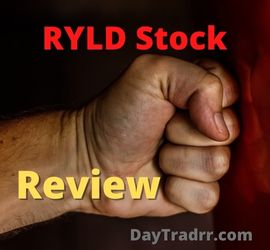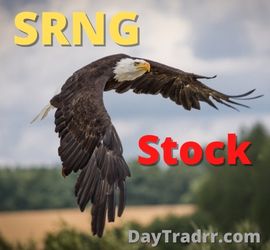RYLD Stock: The Small Cap Giants of the Russell 2000 Index
 The Global X Russell 2000 Covered Call (RYLD Stock ticker) is an ETF that buys stocks in the Russell 2000 Index. The ETF then “sells” or “writes” covered call options on those stocks. The Fund invests in the equities that make up the Russell 2000 Index and sometimes holds shares of the Vanguard Russell 2000 ETF. Positive investing outcomes are what the Global X Russell 2000 Covered Call ETF (RYLD) aims to provide. The fund’s basic objective is to match the income and price performance of the Cboe Russell 2000 BuyWrite Index.
The Global X Russell 2000 Covered Call (RYLD Stock ticker) is an ETF that buys stocks in the Russell 2000 Index. The ETF then “sells” or “writes” covered call options on those stocks. The Fund invests in the equities that make up the Russell 2000 Index and sometimes holds shares of the Vanguard Russell 2000 ETF. Positive investing outcomes are what the Global X Russell 2000 Covered Call ETF (RYLD) aims to provide. The fund’s basic objective is to match the income and price performance of the Cboe Russell 2000 BuyWrite Index.
The Russell 3000 index is comprised of the 3,000 largest publicly traded companies in the United States. The Russell 2000 represents the performance of the 2,000 smallest companies in the Russell 3000 Index. Traders, analysts, and journalists all keep a close eye on the Russell 2000 Index. This is because of its status as a benchmark and go-to measure of small-cap performance.
Russell 2000 Index
Frank Russell Company, currently a division of the London Stock Exchange Group, developed the first version of the Russell 2000 Index in 1984. The index was created so that small-cap firms would have a standard against which to measure their performance. Prior to this, smaller businesses were frequently ignored by larger market indexes like the S&P 500. Each year, firms are included and withdrawn from the Russell 2000 Index depending on their market capitalization.
The Russell 2000 Index is built off of the larger Russell 3000 Index, which includes the 3,000 biggest U.S. publicly listed firms. Companies having the smallest market caps are chosen to be included in the Russell 2000 Index. The index is capitalization-weighted. This means the biggest firms in the index have a greater impact on the overall performance of the index.
RYLD Stock – Covered Call Strategy
The Global X Russell 2000 Covered Call ETF (RYLD stock ticker) employs a covered call options strategy. This is an options trading strategy that seeks to provide additional income potential while limiting downside exposure. The approach includes “writing,” or selling, call options on the Russell 2000 Index while simultaneously purchasing equities in the index.
More about covered call options
The buyer of a call option has the choice, but not the duty, to buy a stock at a certain price or strike price. Also, there is a distinct time frame spelled out that is referred to as the expiration date. In return for obtaining an option premium from the buyer, the option seller effectively forfeits part of the stock’s potential gain when it sells a call option. However, the seller receives income in the form of this premium, which helps to increase returns. The covered call strategy aids in reducing the seller’s possible losses. If the underlying price increases and the call option expires in the money, the seller is “covered” since he owns the underlying stock. In this scenario, the seller can minimize possible losses by simply selling the shares in his possession to the option buyer.
The Global X Russell 2000 Covered Call ETF (RYLD Stock)
The Global Global X Russell 2000 (RYLD Stock) ETF uses this same covered call strategy Fund managers purchase the equities that make up the Russell 2000 Index. Thereafter, they offer a series of one-month at-the-money covered call options on the same index. This limits possible losses from changes in stock price while enabling the ETF to earn extra revenue from option premiums. Additionally, the ETF invests at least 80% of its total assets in securities that make up index components. Or, investments that have economic characteristics that are very comparable to those of the component securities.
However, this covered call strategy has potential downsides as well. For example, the ETF would be required to sell the stock at the lower strike price if the stock rose far over the strike price. In that instance, they would miss the chance to sell the shares for a potentially bigger profit. Instead, the ETF would forfeit prospective profits in exchange for the option premiums. The strategy works well as a hedge in a stable or declining market. The approach would not be as effective in a market where equities are continually climbing higher. So, the Global X Russell 2000 Covered Call ETF (RYLD) uses the covered call strategy as a hedge. It provides a means to profit from the options market while limiting possible losses.
Performance
Performance Over the previous several decades, the Russell 2000 Index has performed well, returning an average of almost 12% annually. But the index is notorious for its erratic behavior. For example, it has also suffered substantial losses during down markets. In fact, the S&P 500 index has outperformed the Russell 2000 in recent years as well.
RYLD Stock – Dividend Yield
RYLD Stock has a dividend yield of 13.80% and paid $2.66 per share in the past year. The dividend is paid every month and the next ex-dividend date is Dec 29, 2022.
Dividend Yield Explained
The dividend yield is calculated by dividing a company’s annual dividends per share by its current share price. Investors can secure a relatively stable cash flow by investing in companies with stable and high dividend yields. However, dividend yields can temporarily remain high even when a company is in financial trouble. In that case, if the company does not rebound quickly, the dividend may be cut soon. (Source: DayTradrr.com)
RYLD Stock – Advantages and Disadvantages of Using the Russell 2000 Index
The Russell 2000 Index’s small-cap concentration offers a more thorough perspective of the broader market. Other big indexes like the S&P 500, tend to be top-heavy and influenced by the biggest players. The benefit of using the Russell 2000 Index as a benchmark is that it contains businesses from several sectors and industries. In fact, the Russell 2000 Index is sometimes regarded as a broad market index. However, it has the potential to be less liquid and more volatile than other significant indexes. This might make trading more challenging and result in greater price fluctuations.
Overall, the Russell 2000 Index has had a solid historical performance over time despite its volatility. But, the S&P 500 index has recently outperformed the Russell 2000. Although the Index is regarded as a wide market index, trading it is more difficult due to its lower liquidity and volatility.
RYLD Stock – Frequently Asked Questions
What is the Russell 2000 Index?
The Russell 2000 Index is a stock market index. It reflects the performance of the Russell 3000 Index but only includes the 2,000 smallest companies. The Russell 2000 Index is often used as a benchmark for small-cap companies. As a result, investors, analysts, and the media pay careful attention to it.
How is the Russell 2000 Index constructed?
The Russell 3000 Index is comprised of 3,000 of the biggest publicly listed firms in the US. This is the foundation from which the Russell 2000 Index is built. The Russell 2000 Index thus comprises the 2000 firms with the lowest market capitalization. The index is weighted according to market capitalization. Therefore, the performance of the index is most heavily influenced by the performance of the highest market capitalization firms. Every year, new firms are added to and removed from the Russell 2000 Index according to their market value.
What is the dividend yield for the RYLD Stock ETF?
RYLD Stock has a dividend yield of 13.80% and paid $2.66 per share in the past year. The dividend is paid every month and the next ex-dividend date is Dec 29, 2022. (Source: DayTradrr.com)
How do I buy shares of Global X Russell 2000 (RYLD Stock) Covered Call ETF?
Shares of RYLD stock can be purchased through any online brokerage account. Popular online brokerages with access to the U.S. stock market include WeBull, Vanguard Brokerage Services, TD Ameritrade, E*TRADE, Robinhood, Fidelity, and Charles Schwab.
What is the historical performance of the Russell 2000 Index?
Over the previous several decades, the Russell 2000 Index has performed well, returning an average of almost 12% annually. But the index is notorious for its erratic behavior. For example, it has also suffered substantial losses during down markets. The S&P 500 index has outperformed the Russell 2000 in recent years as well.
Up Next: Giggle Finance Review: How it Works and How to Join
 Giggle Finance is a decentralized finance (DeFi) project built on the Ethereum blockchain. The platform allows users to lend and borrow cryptocurrency as well as other types of digital assets. Users of Giggle Finance have the ability to borrow money and earn interest on their deposited monies. Additionally, members have access to a variety of other forms of financial services. For example, users may leverage their bitcoin holdings to generate additional passive income. In this Giggle Finance review, we will discuss what the platform is capable of and the benefits it offers. Moreover, how it operates and how users can sign up for an account. Finally, we’ll look at potential risks, customer feedback, and other available options.
Giggle Finance is a decentralized finance (DeFi) project built on the Ethereum blockchain. The platform allows users to lend and borrow cryptocurrency as well as other types of digital assets. Users of Giggle Finance have the ability to borrow money and earn interest on their deposited monies. Additionally, members have access to a variety of other forms of financial services. For example, users may leverage their bitcoin holdings to generate additional passive income. In this Giggle Finance review, we will discuss what the platform is capable of and the benefits it offers. Moreover, how it operates and how users can sign up for an account. Finally, we’ll look at potential risks, customer feedback, and other available options.




